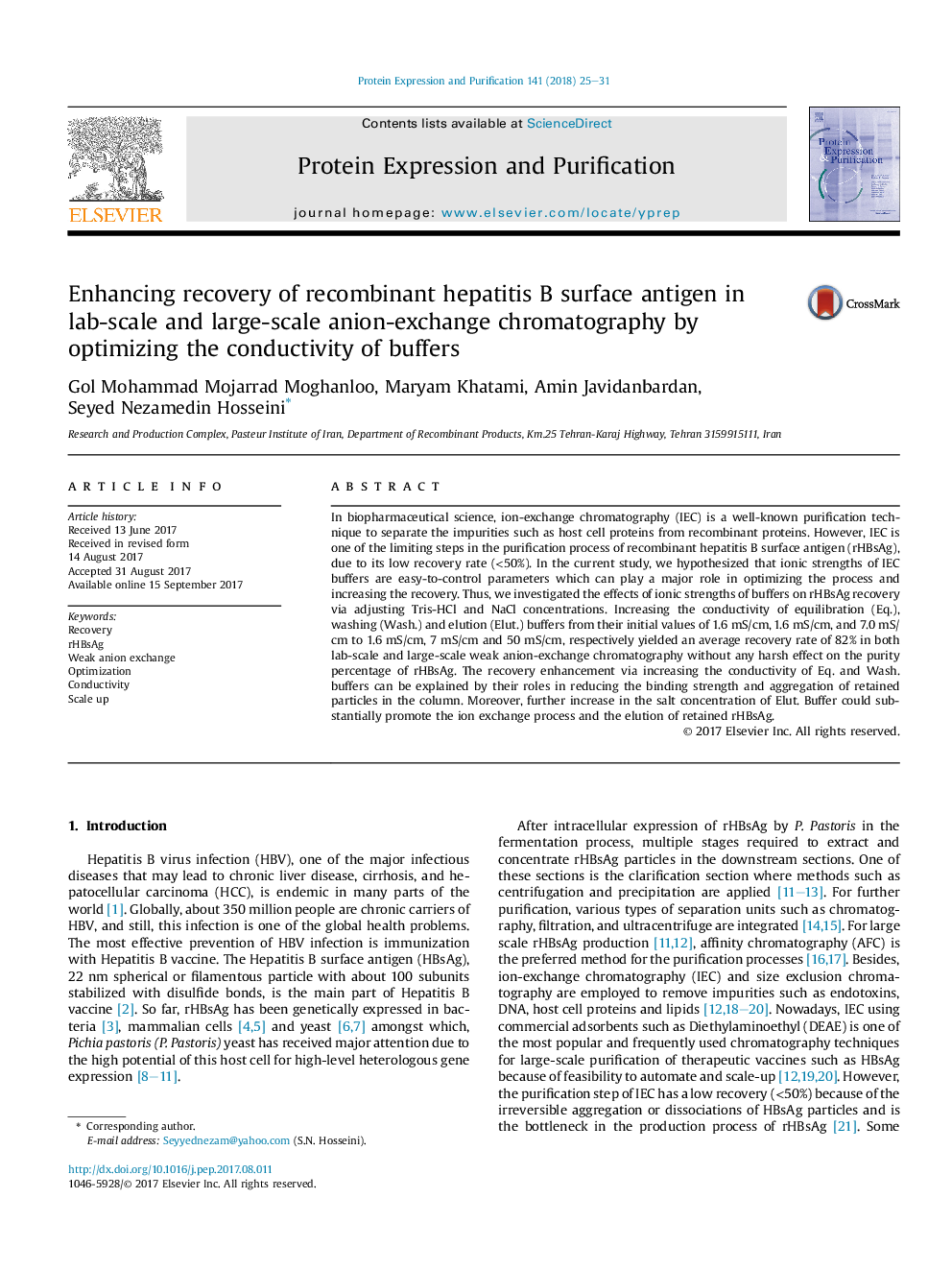| Article ID | Journal | Published Year | Pages | File Type |
|---|---|---|---|---|
| 5515969 | Protein Expression and Purification | 2018 | 7 Pages |
â¢Purification of recombinant HBsAg by anion exchange chromatography was studied.â¢Optimal ionic strengths of anion exchange chromatography buffers were determined.â¢In both lab-scale and large-scale, the product yield was enhanced from 50% to 80%.â¢The product purity in both lab-scale and large-scale was increased from 80% to >95%.
In biopharmaceutical science, ion-exchange chromatography (IEC) is a well-known purification technique to separate the impurities such as host cell proteins from recombinant proteins. However, IEC is one of the limiting steps in the purification process of recombinant hepatitis B surface antigen (rHBsAg), due to its low recovery rate (<50%). In the current study, we hypothesized that ionic strengths of IEC buffers are easy-to-control parameters which can play a major role in optimizing the process and increasing the recovery. Thus, we investigated the effects of ionic strengths of buffers on rHBsAg recovery via adjusting Tris-HCl and NaCl concentrations. Increasing the conductivity of equilibration (Eq.), washing (Wash.) and elution (Elut.) buffers from their initial values of 1.6Â mS/cm, 1.6Â mS/cm, and 7.0Â mS/cm to 1.6Â mS/cm, 7Â mS/cm and 50Â mS/cm, respectively yielded an average recovery rate of 82% in both lab-scale and large-scale weak anion-exchange chromatography without any harsh effect on the purity percentage of rHBsAg. The recovery enhancement via increasing the conductivity of Eq. and Wash. buffers can be explained by their roles in reducing the binding strength and aggregation of retained particles in the column. Moreover, further increase in the salt concentration of Elut. Buffer could substantially promote the ion exchange process and the elution of retained rHBsAg.
